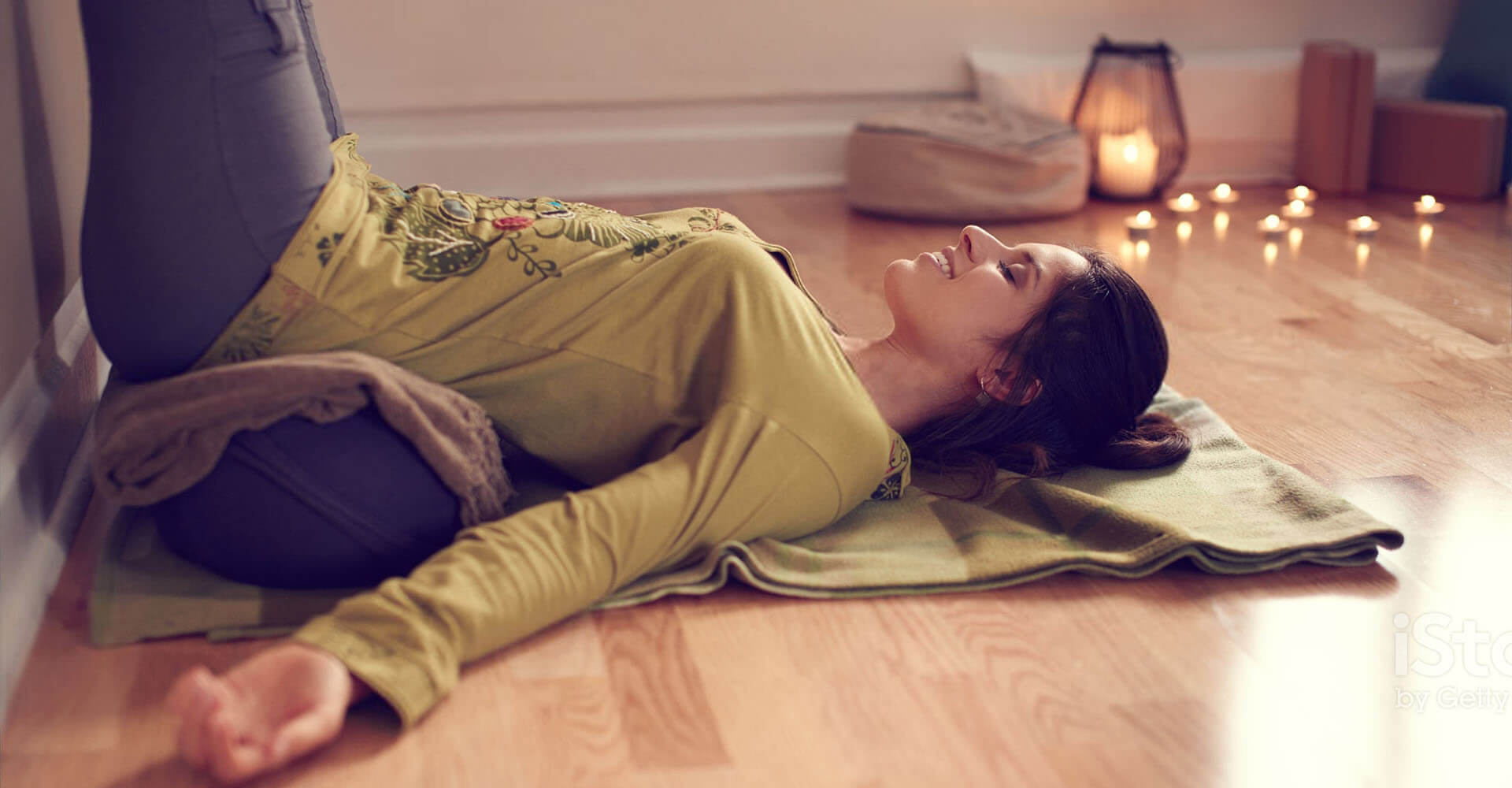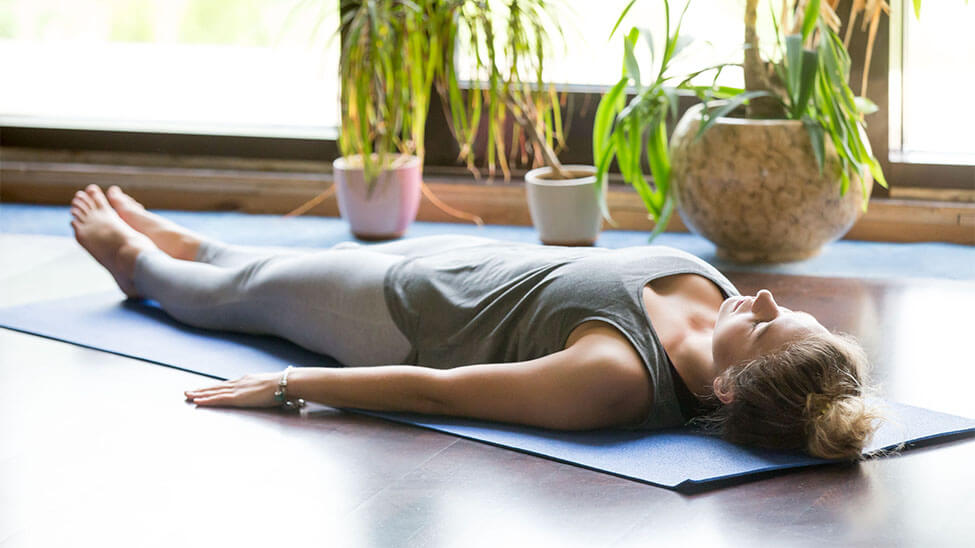
What is autogenic training?
Relaxation method
Autogenic training is a relaxation method based on autosuggestion, i.e. the phenomenon of thought control by the subconscious mind. It was developed in 1925 by the Berlin-born psychiatrist Johannes Heinrich Schultz and became known beyond Germany’s borders, especially through his book “The Autogenic Training”.
Other relaxation methods
Relaxation methods such as the Indian yoga teachings or the Japanese Zen meditation had been known for thousands of years. However, the problem was that these techniques were very difficult to separate from the cultural environment and its worldview.
Body therapy and self-hypnosis
Autogenic training can be understood on the one hand as body therapy and on the other hand as self-hypnosis. Through the premature relaxation of the muscles, signals are passed on to the brain in the sense of “Your body is relaxed, your mind must also be relaxed!”. Based on these primary physical changes, it is a body therapy, but on the other hand, it is also a self-hypnosis, as the person induces a state of change through autosuggestion.
What are the effects of autogenic training?
Positive effects
Autogenic training has been proven to have many positive effects. By controlling your thoughts you can use it in the following areas:
- Lower stress levels
- Overcome fears
- Eliminate sleep disorders
- Relieve headaches and stomach aches
- Lower high blood pressure
- Enhance creativity
- Increase self-esteem
- Increase concentration
Caution
When you do autogenic training, it is important that you are able to concentrate and focus completely. For this reason, people with mental illnesses such as schizophrenia, but also severe depression, are not advised to do any unexplained training. Instead, you should always consult a doctor and, if necessary, a trainer, as incorrect execution can have negative consequences for your circulation and nervous system.
Learn autogenic training – what you should pay attention to
Regular training
It is especially important that you use the exercises at regular intervals, so that you can memorize the exercises and an automatism is established. However, you should not do the exercises too often, so as not to overload yourself unnecessarily. Autogenic training is recommended two to three times a day for about 10 minutes. A single exercise should not last longer than four minutes.
The correct posture
There are many different postures that you can use and choose between for your Autogenic Training exercises. You can easily choose the one that is most comfortable for you and easiest to integrate into your daily life, according to your preferences. We present you the four most popular and proven ones below.
Lying posture
In this pose, simply lie completely flat on your floor, bed, sofa, yoga mat or similar. For your support, you can place a meditation cushion under your neck and under the back of your knees. Place your arms straight by your sides, palms facing down. You should also stretch your legs long from you and turn the tips of your feet slightly outward. The most comfortable way to do this is to wear appropriate clothing, such as yoga pants.
Desk chair posture
This pose is especially good for your little break at the office, since you need a desk and a desk chair for it (a meditation bench or similar would not work here). You sit on the chair with your back straight so that your legs form a 90° angle. Your arms are placed palms down on the desk so that the edge starts at about your elbows and your arms are a hand’s width apart.
Droschenkutscher posture
For the pose, you will need a simple chair with a seat on which you sit so that you can bend your upper body forward and rest your elbows on your thighs. Your gaze should follow your hands, hanging loosely down the inside of your legs, to the floor. Your body and muscles are completely relaxed in this position.
Reclining Chair Posture
Learn autogenic training – structure
To learn autogenic training, it is often divided into two sections that are designed to train different systems. The first deals with the vegetative nervous system, and the second with the training of your organs.
1. Vegetative Nervous System
The training of the vegetative nervous system is recommended mainly for beginners and is divided into three exercises: the rest exercise, the heaviness exercise and the heat exercise.
Rest exercise
The rest exercise is sort of the introduction for your body and prepares it for the exercises yet to come.
Execution:
Take one of the exercise postures and close your eyes. Breathe deeply in and out and concentrate on the sounds of your breath. Imagine a place that relaxes you and think about the sounds and smells you perceive there. Now you can start your exercises by repeating a sentence like “I am completely calm”. Try to stay completely relaxed and calm.
Gravity exercise
The heaviness exercise is to completely relax your muscles by loosening your muscles after your mind now.
Execution:
You should now direct your concentration to your strong arm. This would be the right arm for right-handed people and the left arm for left-handed people. Imagine it with closed eyes and repeat the sentence “The right or left arm is getting heavier and heavier.” inside your mind. Now, if you feel a heaviness coming up in your arm, start the procedure with your other arm, as well as with both legs, until your whole body feels heavy.
Heat exercise
The heat exercise is designed to dilate your blood vessels and thus increase your body temperature.
Execution
Again, you are to focus on your strong arm here. But this time it should not be heavy, but warm. Therefore, repeat the sentence “My right or left arm is getting warm” until you hear a slight feeling of warmth. Now you should extend this again to your whole body.
2. Organs
The second section of autogenic training focuses on your organs and is recommended more for advanced students who have already mastered the upper exercises. They are divided into a total of four exercises: the Breathing Exercise, the Sun Plexus, the Heart Exercise and the Forehead Cooler.
Breathing exercise
The breathing exercise is designed to increase your inner relaxation by breathing in and out more consciously and deeply.
Execution:
After the heat exercise, you should already be relatively relaxed. Now concentrate solely on your breathing and repeat the sentence “I breathe calmly and evenly” within yourself. Complete the breathing exercise with the retraction (see below).
Solar plexus
The solar plexus is the nerve plexus below the diaphragm and particularly controls the stomach and intestinal functions. The exercise is designed to increase blood flow to this area.
Execution:
Focus on your solar plexus (lower abdomen) and repeat within yourself the phrase, “My solar plexus is warm.” To help, you can also visualize a hand or object that is in front of your lower abdomen radiating warmth.
Heart exercise
The cardio exercise is designed to stimulate the heart muscle and thus regulate blood pressure and pulse rate.
Execution:
In this exercise, you need to completely focus on your heart as it beats warmly in your chest. Then keep repeating the phrase inside you “My heart is beating calmly and steadily.” until you notice that your pulse slows down and you yourself become more and more relaxed.
Forehead cool
The last exercise is called forehead chill and it releases the tension in your facial muscles. It is also said to help you think clearly in particularly stressful situations.
Execution:
Focus on your forehead area and repeat within yourself the phrase, “My forehead is pleasantly cool.” To help, you can imagine a wet, cold washcloth lying on your forehead.
Take back
The retraction ends the autogenic training and dissolves your trance-like state again. To do this, you should perform phrases like “Take a deep breath and open your eyes again” with a certain body movement. If you still don’t feel awake and a bit dizzy afterwards, you need to repeat the process.
Because if you don’t do the retraction or don’t do it properly, you will be very tired and dizzy in your everyday life. Of course, it is advantageous to do this just before going to sleep, that is, when you have insomnia.
Conclusion
Learn autogenic training – it doesn’t take much more than time and believe it or not training. We hope that with this little explanation we could bring a little more relaxation into your everyday life.










